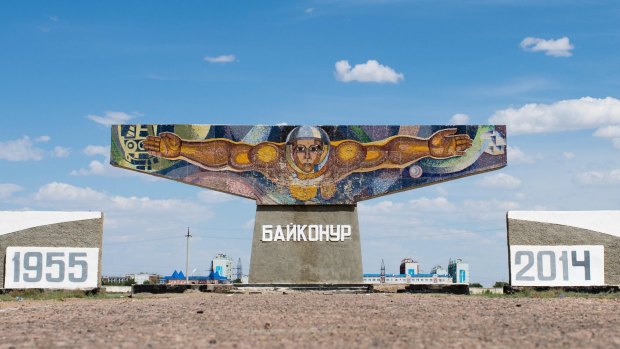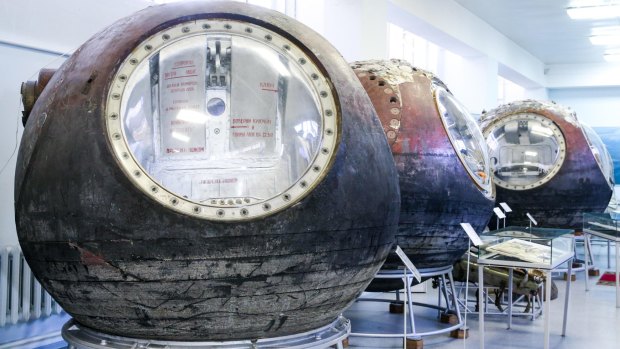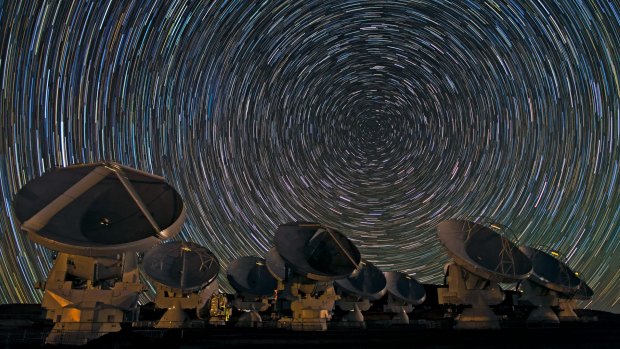This was published 4 years ago
The 10 best space odysseys to experience (without leaving Earth)

Baikonur, Kazakhstan, is the world's first and largest operational space launch facility.Credit: Science History Images/Alamy
KENNEDY SPACE CENTRE, US
Space-related tourism doesn't get any better than this. NASA's Cape Canaveral base has launched the Mercury, Gemini and Apollo space missions; it's where you've seen rockets and shuttles blasting off; it's where miracles and disasters have taken place. Visitors to Kennedy today can visit historic launch sites, see the Saturn V moon rocket, gaze at the Atlantis space shuttle and even sign up for astronaut training.
BAIKONUR COSMODROME, KAZAKHSTAN
Surprise: this is the world's first and largest operational space launch facility. And it's in Kazakhstan. Both Sputnik 1 – the first artificial satellite – and Vostok 1, the first manned space flight, were launched from this site on the bare desert steppe. All crewed Russian space flights still take off from here. For visitors, there are tours of the facilities, plus a museum featuring photographs, artefacts and a restored shuttle from the Soviet "Buran" program.
TANEGASHIMA SPACE CENTRE, JAPAN
Tanegashima is Japan's largest rocket-launch complex, a site on Tane Island, off the coast of Kyushu, where the bulk of the nation's satellites are assembled and sent up. Tours of the facility are available, calling past launch sites and viewpoints, while visitors can also get inside a full-sized replica of "Kibo" – the experiment module that's now being assembled at the International Space Station – plus visit the rocket launch theatre and Space Information Centre.
See global.jaxa.jp
RSC ENERGIA SPACE MUSEUM, RUSSIA

Capsules of Voskhod spacecraft on display at the Museum of Korolev Rocket and Space Corporation Energia. Credit: Alamy
You don't have to go to the middle of nowhere to get your space tourism fix. The RSC Energia Space Museum is on the outskirts of Moscow, and it's a hugely impressive facility showcasing Russia's history of extraterrestrial exploration. Here you'll find the descent module used by Yuri Gagarin, the Voskhod-2 spacecraft, from which the first spacewalk was taken, plus full-scale models of the Soyuz-Apollo orbital module and the Salyut and Mir space stations.
See energia.ru
PARKES OBSERVATORY, AUSTRALIA
Australia's important role in space exploration can be traced at Parkes Observatory in central NSW. It's here (as well as at Honeysuckle Creek in the ACT) that communications from NASA's Apollo moon missions were received, and the 64-metre-wide dish remains as an attraction today. The Visitors Centre allows tourists to watch as the dish is moved into a position, plus there are other exhibits and a 3D movie theatre.
STAR CITY, RUSSIA
If you were a cosmonaut from Soviet times you would know this place as Shchyolkovo-14, or Zvyozdny. To the rest of us, it's Star City, a Russian settlement that since the 1960s has been home to the Yuri Gagarin Cosmonaut Training Centre, a once-closed base that is still the living quarters of past and present space explorers. Tours of Star City are available, and include the chance to wear a spacesuit and fly a simulator.
ARECIBO RADIO TELESCOPE, PUERTO RICO
The world's largest radio telescope is a colossal 300 metres in diameter, and rests in the dense jungle of Puerto Rico. There's a 900-tonne platform suspended 140 metres above the dish too, housing antennae and other highly complex equipment. This is, in short, one spectacular site. Arecibo is also open to the public: a visitor centre houses a series of exhibits and allows access to an observation deck.
See naic.edu
ALMA OBSERVATORY, CHILE

Long exposure of star trails around the south celestial pole and above the Atacama Large Millimeter Array, ALMA. Credit: Alamy Stock Photo
Instead of going to space, how about simply peering into it? There are few better places on Earth to do that than Chile's high-altitude Atacama Desert. Here you'll find the Atacama Large Millimetre Array (ALMA) Observatory, a series of 66 radio telescopes affixed to the desert floor, 5000 metres above sea level, which recently helped capture the first photograph of a black hole. Visitors can tour the control room, laboratories and antennas.
PALOMAR OBSERVATORY, US
Here's another chance to peer at the stars, this time from San Diego in southern California. Under a dome the size of the Pantheon in Rome, the Palomar Observatory holds two large telescopes – including the Hale, once the world's biggest – which are now used mostly to track asteroids. The facility is open to the public daily, with guided tours of the Hale telescope on weekends.
SPACE NEEDLE, US
Admittedly, there's nothing truly spacey about Seattle's Space Needle except the design. This 184-metre-high tower looks like something out of The Jetsons, inspired as it was by the concept of a flying saucer. That inspiration is pretty clear to see in the circular, revolving restaurant, complete with Saturn-like rings, perched on three spindly legs. There's some serious retro appeal to this famous landmark.
See spaceneedle.com
Sign up for the Traveller newsletter
The latest travel news, tips and inspiration delivered to your inbox. Sign up now.